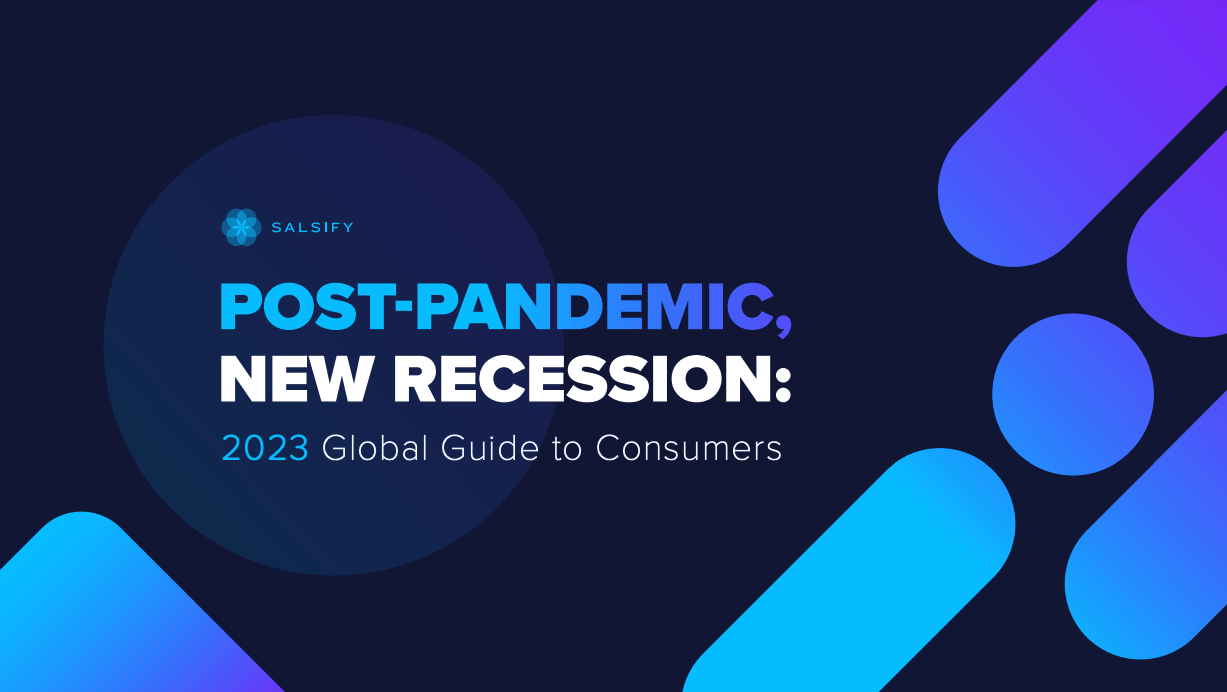Are You Product Catfishing? Why Your Ecommerce Marketing Strategy Must Include Consistent Content

Hook, line, and sinker. Are your ecommerce marketing efforts grabbing the attention of consumers and luring them to shop your digital shelf? It might not be for the right reasons.
Your products might have strong search engine optimization (SEO) or rank well on heavily researched platforms like Amazon. Your engagement rates might be off the charts. You might see strong sales for a while until, eventually, the bad reviews and returns start flooding in.
The very product content you thought was so attractive to consumers might actually be to blame. If it isn’t consistent across your channels, features outdated images or data — or is just flat-out wrong, you might be product catfishing.
Learn more about this unfortunate phenomenon and how to remedy it before it sinks your sales and your reputation.
What Is Product Catfishing?
Similar to the human variety of catfishing, product catfishing is when a product page — whether intentionally or unintentionally — offers inaccurate information and content that can deceive its audience. Types of inaccurate content can include a whole range of product attributes as well as images, videos, or other assets that don’t portray the true nature of the product.
Deceiving customers is likely on no one’s to-do, especially when it comes to high-stakes mistakes like misreporting ingredients, allergens, or other errors that could lead to costly recalls.
There are measures in place to protect consumers from these mishaps and hold corporations accountable, but of course, you never want these laws enacted on your brand.
According to United Nations Conference on Trade and Development (UNCTAD), online consumer protection legislation for consumers exists in 115 countries out of 142 countries with data available. This share varies from 78% in Europe to 52% in Africa and 71% in the Americas. To ease some concerns about potential product catfishing, check out the list below.
What Product Catfishing Is Not
The following are actually considered best practices when it comes to creating compelling product experiences.
Therefore, product catfishing is not:
- Portraying your product in its best light with high-quality content, images, and videos;
- Presenting your product in out-of-the-box or unique ways with other creative assets;
- Leveraging Q&As or tutorials that reveal different (realistic) uses or applications of your product; or
- Taking advantage of user-generated content (UGC) or reviews to show how real customers interact with your product.
In other words, if you’re selling a Camry-grade baby stroller (and there’s nothing wrong with that) the right visuals and copy can make consumers feel like they’re getting a Carrera. What you cannot do, however, is market a Carrera and have it roll up to a customer’s door as nothing more than a baby stroller.
How Product Catfishing Can Harm Your Ecommerce Marketing Efforts
No matter how provocative your ecommerce marketing strategy is, product catfishing can quickly kill it. There might be a variety of reasons why shoppers aren’t buying your products, but the overarching cause is likely inconsistent or inaccurate product content, the core of product catfishing. This can lead to other issues beyond lost sales that can avalanche and cause lasting performance lags:
Unsatisfied Customers
If customers learn to distrust your product information, they’ll likely abandon your brand for good.
After all, the top page feature that helps consumers decide what to buy in the U.S. (72%), Great Britain (68%), France (67%), Australia (65%), and Germany (62%) is the product description, per Salsify’s “2023 Shopper Research,” a survey of more than 6,000 global consumers.
A close second to the product description is customer reviews, as reported by 72% of those surveyed in the U.S., 65% in Great Britain, 57% in Germany, 51% in France, and 62% in Australia.
This doesn’t mean that a few negative reviews (for legitimate matters of taste and so on) will weigh your brand down. Maintaining transparency is incredibly important to today’s consumers, and a lack of negative reviews is a red flag.
As noted by Search Engine Journal (SEJ), a 2021 PowerReviews survey found that 96% of consumers look for negative reviews — and not to totally disregard your brand. Instead, negative reviews help consumers understand your potential weaknesses and how you address them. After all, a weakness to one consumer might not matter to another.
Product Recalls
A possible (and costly) consequence of product catfishing is product recalls. Though a necessary measure at times to ensure consumer safety, they can severely disrupt positive strides in ecommerce marketing.
“Between lost sales, replacement costs, government sanctions, and lawsuits, a significant recall can become a multi-billion dollar ordeal,” according to Investopedia — and that’s characteristic of large corporations. And, unfortunately, small companies may not be able to recover from recalls because of lower cash flow or brand recognition.
However, recovery isn’t impossible nor is maintaining a good reputation if the matter is handled swiftly and transparently.
High Return Rates
Beyond your products being forcibly taken off the market, product catfishing and inconsistent product content can also lead to frequent rejection and high return rates.
Returns have been increasing dramatically both in frequency and cost in the U.S. per Insider Intelligence. The most “return-happy” countries in Europe are Germany and the U.K., as noted by the supply chain and logistics outlet, LogisticsMatter.
According to Salsify’s 2023 consumer research:
- More than half (54%) of consumers returned an item due to it being the wrong size, clothing fit, or product dimensions; and
- 39% of consumers returned an item because the product didn’t match the images provided.
Shoppers’ inclination toward online shopping isn’t stopping any time soon, making it all the more imperative to ensure your product content is comprehensive and leaves as little to the imagination as possible.
Use a Central Source of Truth to Showcase Your Products’ Assets, Consistently
Any inconsistencies or discrepancies in your product content are likely (largely) due to information stored in your systems. Or, it might be that correct or updated information isn’t reaching its destination.
Ask yourself, are your systems siloed and disparate? Or are you simply not able to keep up with updates to your endpoints and retailers?
Countless spreadsheets and one-off drive folders safeguarded by different teams aren’t the way to create a consistent or winning digital shelf presence — and put you on a fast track for a reputation of product catfishing.
Similarly, a lack of clarity on your retailers’ requirements — or a lack of time for your teams to oversee updates on your own direct-to-consumer (DTC) site — can also lead to the same demise.
The solution lies in effective product experience management (PXM) and creating a central source of truth for your product content.
Achieve Alignment and Deep Understanding Across Your Teams
Having one central source of truth and a repository for all of your product content, images — the whole lot — will help your teams achieve alignment and a deep understanding of what your brand is and what it isn’t.
Finding a solution that empowers cross-functional collaboration and limits confusion on what the real “final version” of content is will save your teams — from legal to marketing — significant time and effort.
Better yet, finding ways to automate your content updates and related processes will allow your teams to focus on critical improvements or leave room for seasonal creativity.
Look Your Best on Every Channel and Retailer
The not-so-ugly truth: Consumers want to see your products in their most natural, authentic light as if they were holding them in their own hand or viewing them in their own space.
Not only is this achieved through consistent product content but also through below-the-fold, enhanced content, or A+ content like 3D imagery, augmented reality (AR), or virtual reality (VR) on enabled channels.
It might not always be possible to appear the exact same on every single channel, and offering contextualized experiences for different audiences can only work in your favor. For example, you’ll likely reach a different demographic of shoppers looking at your mid-mod brass lamp on Lowe’s versus Instagram.
Attract New Prospects
The greater the degree (and volume) of truth that exists in your product content, the more you can push it out to new channels and attract new prospects.
You can woo a shopper just about anywhere online these days, whether it be social media or a wider range of retailers when you scale. Per Salsify research, the top two ways shoppers discover new products are social media and shopping apps.
Ecommerce Marketing and Accurate Product Content: The Perfect Match
Don’t let poor content quality leave your products to gather dust on your digital shelf, or worse, earn a bad rap. What’s a provocative ecommerce marketing strategy without consistent product content to promote? Keep it consistent, and you’ll start reeling in sales and growing customer loyalty.

Grow Sales and Loyalty in 2023 and Beyond With Global Shopper Insights
Download Salsify’s “2023 Consumer Research” report to learn how customers research brands and products and why the digital experience is a major factor in building customer loyalty.
DOWNLOAD NOW
Tag(s):
Ecommerce Marketing
Written by: Yvonne Bertovich
Yvonne Bertovich (she/her) is an editor and writer at Salsify, reporting from Knoxville, Tennessee. With a longtime passion for research, she enjoys flexing her perspective on ecommerce, trends in consumer behavior, and health and wellness.
Recent Posts
Ecommerce Marketing
|
12 minute read
The Art of the Impulse Buy: 70% of Shoppers Say Discounts Drive Unplanned Purchases — Here’s Why
Read More
Ecommerce Marketing
|
10 minute read
What Does It Take To Have a Good Brand Reputation in 2025?
Read More
Ecommerce Trends
|
11 minute read
What Is Commerce Media — and How Can It Optimize Your Marketing Spend?
Read More
Subscribe to the Below the Fold Newsletter
Standing out on the digital shelf starts with access to the latest industry content. Subscribe to Below the Fold, our monthly content newsletter, and join other commerce leaders.
2023 Consumer Research Report
Check out global insights on what appeals to modern consumers to help you create engaging, authentic product experiences.
DOWNLOAD REPORT

.svg)